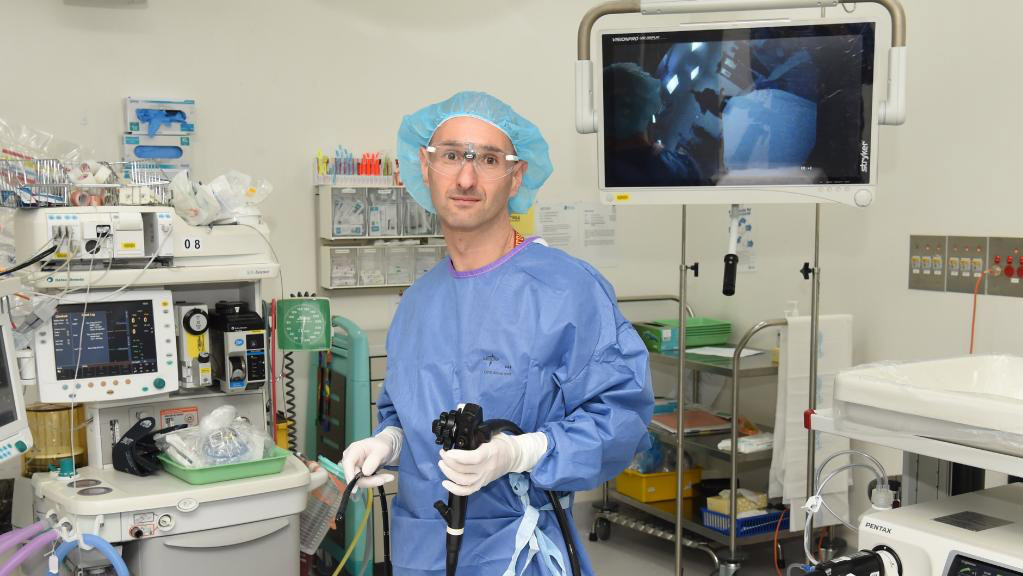Knox Private Hospital surgeon Geoff Kohn performs peroral endoscopic myotomy
11/10/16 17:27 Oesophagus

Zoe Powell, Knox Leader
September 20, 2016
A KNOX Private Hospital surgeon is one of the first in Australia to use a procedure to help people who have long-term swallowing problems.
Peroral endoscopic myotomy uses “next-generation” technology to relieve tightness in the oesophagus so food can pass into the stomach.
The surgery helps relieve people with achalasia, a broad class of disorder involving long-term swallowing issues that can manifest as food being stuck in their throat, chest pain and regurgitation.
Upper GI surgeon Geoff Kohn, who has introduced the procedure at the hospital, said achalasia was usually caused by problems with the esophageal muscles which made it hard to swallow.
Other symptoms of achalasia include heartburn, weight loss and an overall low quality of life.
The major procedure involves putting an endoscope into the mouth, which allows Mr Kohn to operate on the oesophagus’ muscles, avoiding incisions so there is minimal pain, rapid results and no scars.
Mr Kohn said he was one of only a few surgeons in Australia using the procedure and had performed seven operations so far.
“It’s going to be next-generation type surgery,” Mr Kohn said.
He said the procedure originated in Japan in 2008 and was at first considered “completely crazy”.
But now more than 5000 operations had been performed worldwide and the results were “fantastic”, he said.
A downside was there was no long-term data on results and there was a question on whether the procedure caused reflux problems, he said.
Mr Kohn wants to increase awareness of achalasia so people with the condition know there is treatment available.
Julie’s surgery
FERNTREE Gully woman Julie Ballard was on a liquid diet before she had revolutionary throat surgery.
In December last year, Ms Ballard was one of the first people to have the peroral endoscopic myotomy procedure at Knox Private Hospital.
She developed achalasia over the past few years, and doctors thought it was reflux, but it wasn’t until about a year ago that she was diagnosed with the disease.
She said it came as a relief, as it became so hard to eat that she avoided solid food.
She said after the non-invasive procedure, she got to reintroduce food within days, and even got her wish to eat ham on Christmas Day.
She is back to eating most foods, although she said she was still sensitive to bread.
“I’m so thankful that I found out what it (achalasia) was and that I was able to have this procedure,” Ms Ballard said.
Reproduced from Knox Leader. To view article, please click here.
